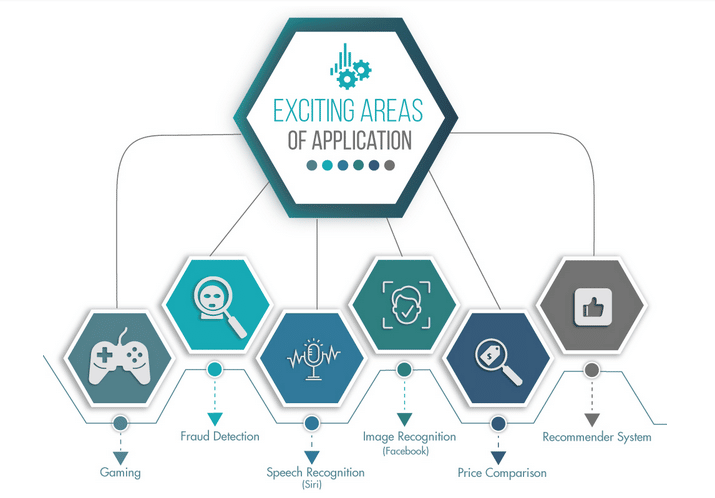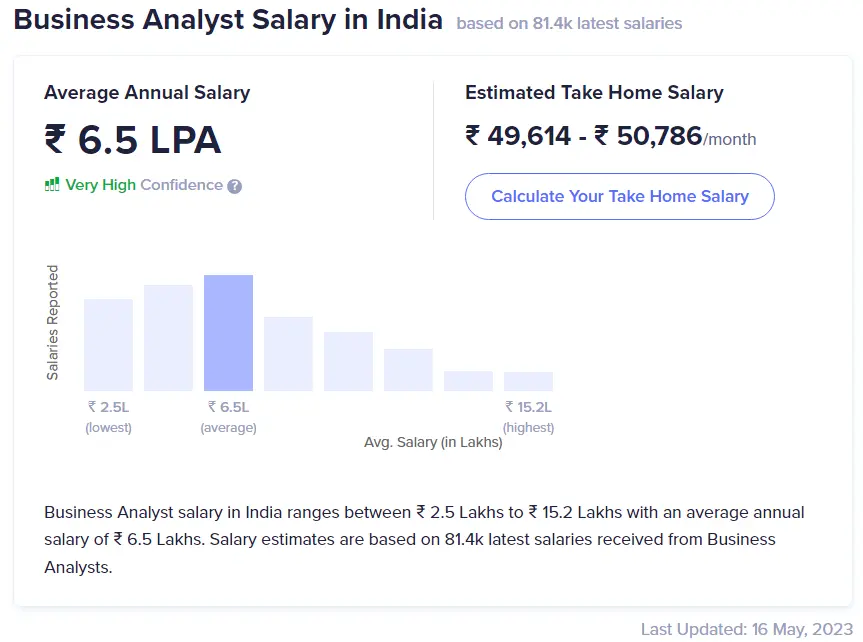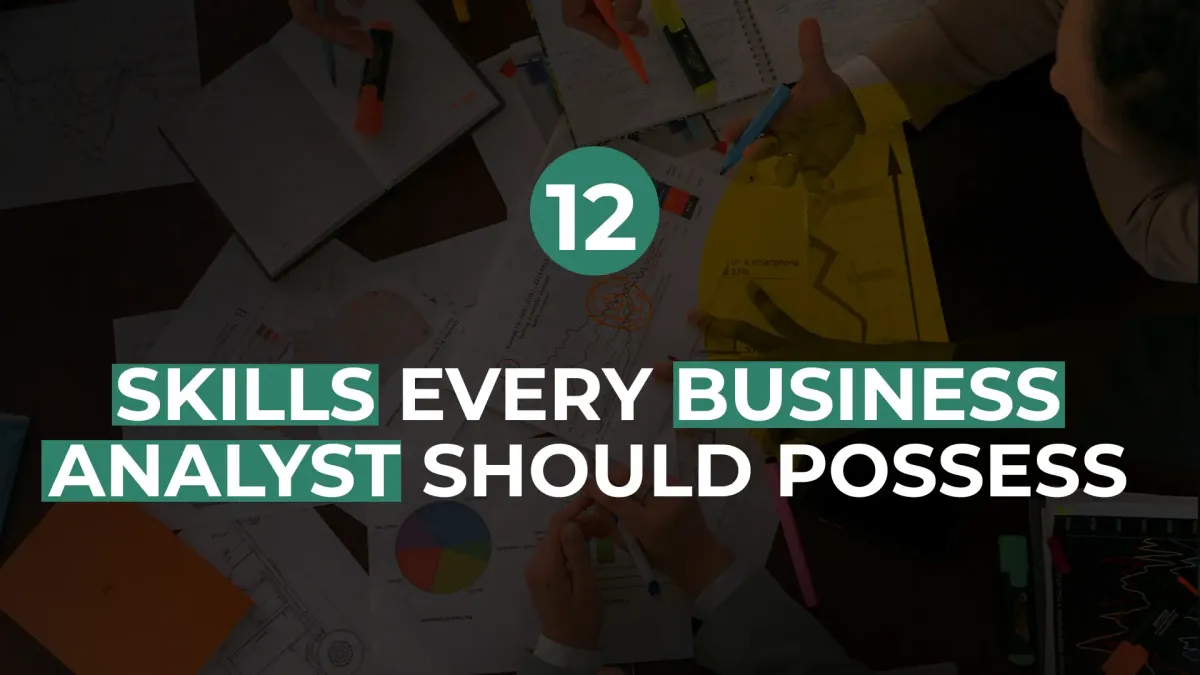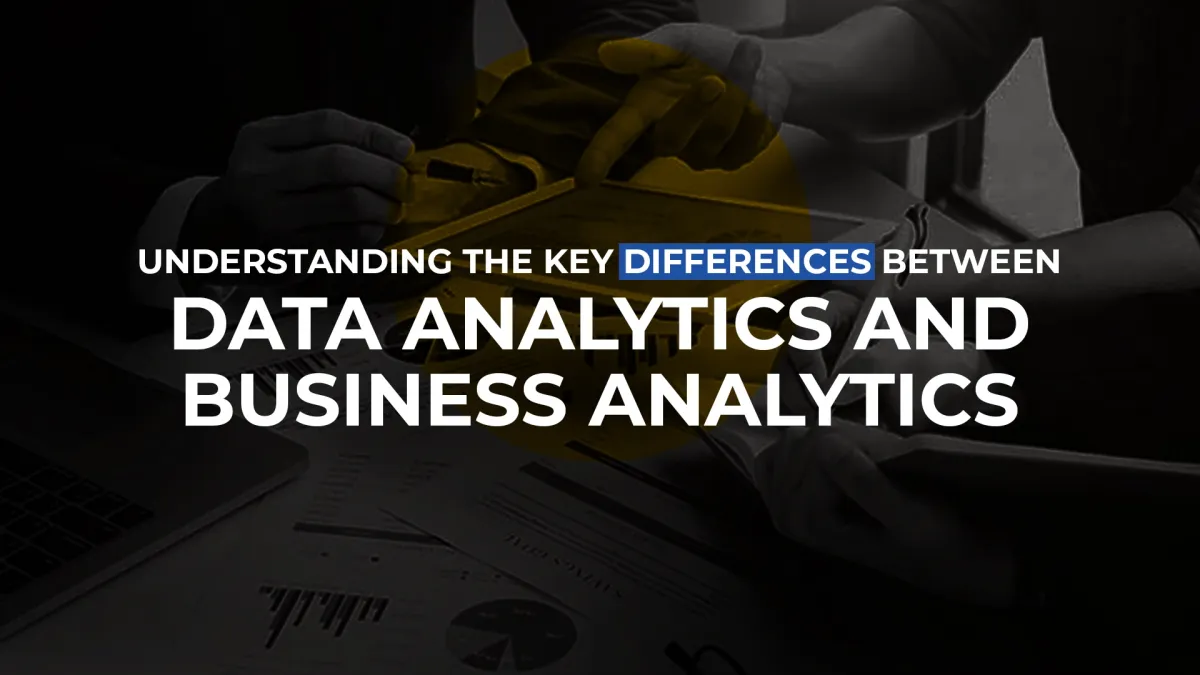Business Analytics – An Exhaustive Guide
What is Business Analytics?
In technical words, business analytics is a blend of various technologies and disciplines to solve business problems. One of the key issues of business is customer acquisition and retention. Hence, businesses leverage the power of technologies like data analytics, business intelligence, and computer programming to devise valuable insights from the data.
A business analyst drills down the data and finds patterns to formulate future business success strategies. These strategies allow businesses to boost customer retention and acquisitions. Further, they also elevate user experience, productivity, customer knowledge, etc. Data serves as the pivotal element for business analytics.
As per stats, the employment of business analysts will rise by 11% from 2019 to 2029. Therefore, if you are good with numbers, being a business analyst can be a fruitful job for you.
How does Business Analytics work?
Undertaking business analytics is not an easy process. Businesses tend to plan a lot before implementing business analytics. Here is a brief overview of the working of the business analytics process.
- Identify the business goal, like whether you want to save on operational costs, improve sales, or something else.
- Collect data: If your goal is to boost sales, collect data like user reviews, social media data, website data, etc., to know about your customers.
- Process and analyse data: After collecting the data, arrange it in a format that is easy to analyse. Analyse the data using analysis techniques like regression, clustering, etc.
- Interpretation and implementation: The analysed data is interpreted, and respective solutions are implemented.
Types of Business Analytics!
Business analytics is primarily of three types, namely.
- Predictive analytics: Predictive analytics is the process that uses statistical models like clustering to analyse data and make predictions about future events.
- Descriptive analytics: Descriptive analytics is where historical data is analysed properly to find patterns and know how the business has performed over the period of time.
- Prescriptive analytics: This takes predictive analytics to a new level. Prescriptive analytics recommends the best solution based on the optimisation techniques and simulations that have been undertaken to analyse different scenarios.
Process under Business Analytics
-
Business Problem Framing
This is the first thing you do before you start your analysis. Even before you begin your analysis, you should understand the purpose of your analysis. Here you try to understand what the business is and what the business is trying to achieve. You formulate the business problem.
-
Analytics Problem Framing
Here you reformulate the business problem with respect to analytics. You develop a proposed set of factors and its relationship to output. Also, you define a metric of success of your model.
-
Data
Here you identify and select your data for analysis and its source. You work to clean the data and make it analysis ready. You also find relationships between data and report them.
-
Methodology Selection and Model Building
Once your data is worked on, you decide which method to use for your analysis. This is decided based on your data and the type of analysis you have to perform. You make multiple models and compare them based on the metrics you decided on.
-
Deployment
You validate your model to check if your model is giving accurate predictions. Once validated and reported, you deploy your model on the company’s system which then will perform analysis on every new incoming data. When a model is deployed, it has to be constantly monitored for accuracy.

What are the Various Skills Required to be a Business Analyst?
So far, we have talked about business analytics; let’s move on and talk about business analysis. After all, if you want to become a business analyst,
- Communication skills: As a business analyst, you have to be proficient in keeping synced and proper communication with your clients. Therefore, it is important to have good communication skills so as to lure clients towards you.
- Inquisitive: Business analytics has a lot of new things for you to learn, such as statistical methods, techniques, etc., that you might not like at first. But they are important. Hence, you need to be inquisitive.
- Critical thinking: There would be heaps of data to analyse for you. Hence, as a business analyst, you have to be a critical thinker. Critical thinking involves careful evaluation and analysis of data to make an informed decision.
- A Visualizer: Along with critical thinking, a business analyst should also be a visualiser. Analytics involves the visualisation of the processed and analysed data to understand it better. Therefore, a business analyst has to be a visualiser to derive valuable insights.
- Technical skills: Technical skills serve as the backbone for the business analyst position. To be a professional business analyst, you have to be good at data modelling and stakeholder management and should have ample knowledge of the IT field.
- Problem-solving: The business analytics process will be a tricky one. Therefore, a business analyst needs to possess sound problem-solving skills. They should be able to quickly find innovative solutions to the problems.
- Storytelling: Everyone likes a nice story, right? If you want to be a business analyst, you have to be a good storyteller. Business analytics data, analysis, and conclusions are not easy to understand. Therefore, a business analyst should be able to make others understand it via storytelling.
Applications Of Business Analytics

Industry Trend
- Accessible Artificial Intelligence – There is widespread adoption of Intelligence into all business systems and decision-making applications.
- The Rise of Predictive Analytics – These solutions produce better decisions, more accurate business predictions and measurable analysis.
- Open Source Solutions – (Smart Apps) This trend includes the use of digital assistants and virtual services.
- Rapidly Growing IoT Networks – The Internet of Things like smarter versions of regular gadgets and equipment to make our lives easy.
How to Become a Business Analyst?
The path to becoming a business analyst has a lot of aspects. First of all, let’s take a brief look at the steps to becoming a business analyst.
- Learn the business analysis fundamentals that include date modelling, budgeting, forecasting, market analysis, etc.
- Take a data analytics course. To be clear, business analytics is a subset of data analytics. Data analytics deals with implementing advanced analysis methods like statistical methods to find patterns in data. A data analytics course will include subjects that will teach you how to do it.
- Develop your practical data analytics skills by working on projects. IMS Proschool has designed its business analytics course that enhances your practical skills apart from theory.
- Work on developing visualisations and learn to present them. Visualisations in business analytics include charts, graphs, and interactive dashboards.
- Develop your work portfolio to lure potential clients.
- Apply for the business analyst job.
You can apply for a business analyst job in companies like Infosys, Amazon, Capgemini, Wipro, Dell, Jio, and a lot more. Based on the niche, you can also bag a job in Make my trip, Snapdeal, Delloite, etc.
Do I need any degree to become a Business Analyst?
Yes, if you are planning to have a professional career in the business analytics field, you need to have a degree in one of the mentioned fields.
- Computer science
- Data Science
- Logistics
- Human resources
- Financial analysis
- Business administration
- Accounting
Subjects One Needs to Master for Business Analytics
To be a professional business analyst, you have to master the subjects that are a part of statistics, data management, and analytical methods. The business analytics certificate course includes the following subjects.
- Introduction to analytics
- Estimation of hypothesis testing
- Neural networks
- Anova
- Data mining using a decision tree
- Descriptive statistics
- Inferential statistics
- Classification algorithm- discriminant Analysis
- Factor analysis and component analysis
- Numpy libraries and array
- Pandas libraries and data frame
- Classification algorithm-Decision trees
- Python for data science
- Linear and nonlinear regression
- Regression
- Model Comparison and further improvement
Business Analytics Tools
To make the job easy for business analysts and data analysts, numerous business analytics tools are available. Some of the best ones are Tableau, ZOHO, Qlik, Google Analytics, Excel, Oracle, Splunk, ChatGPTetc.
At IMS Proschool, you will get to learn analytics tools like Excel, SQL, Tableau, Power BI & Python.
Is Business Analytics the same as Data Analytics and Data Science?
No, they all are different. Data analytics deals with analysing data on a broader scale where patterns are recognised to capture valuable insights about the data. Business analytics is also the analysis of data but is limited to a business perspective. Business analytics analyses data to capture insights dedicated to business success.
Data science is a different thing altogether. It utilises many complex methods that include data cleaning, machine learning, deep learning, and what not to solve complex problems across numerous fields.
Career Prospects
Companies recruiting Business Analytics Course Professionals?

Roles within analytics Team
When it comes to the scope of business analytics, it is wide. By obtaining a certification in business analytics, you can take up various jobs other than a business analyst, such as
| Designation | Description | Minimum Work ex |
| Data Scientist | Using machine learning to build better predictive algorithms | 2-3 years |
| Data Analyst | Analyzing interesting trends found in the data | 1 year |
| Data Architect | Applying feature transformations for machine learning models | 2-3 year |
| Data Administrator | Integrating external or new datasets | 2-3 year |
| Business Analyst | Creating visualizations ,Building APIs for data consumption | 1 year |
Salary of a Business Analyst
The salary of a business analyst or a person who completes a business analyst course varies from 6 to over 15 lakhs based on the industry, city, experience, and type of expertise.
For example, the Telecom industry pays a person with a business analytics course of around 18 lakhs. Mumbai ranks as the city that pays business analysts the highest salary of 13.3 lakhs. If you have an experience of over five years, you can easily cash out over eight lakhs per annum.
- Mumbai is the highest-paying city at almost 13.3 Lakhs per annum, followed by Bengaluru at 12.5 Lakhs.
- 78% of analytics professionals who pursue the Business Analytics course receive salaries in the 0-6 Lakhs salary bracket. This is an indication that more entry-level (fresher) professionals entered the analytics workforce this year.
- Telecom industry is the highest salary payer to its Business analytics course professionals at 18.6 Lakhs.
- Python saw the largest year-on-year jump in salaries, with an increase of around 32%. R professionals saw an increase of 30% in their salaries.
- Advanced analytics/ predictive modelling professionals are paid the highest salaries compared to their analytics peers, i.e. 14.5 Lakhs on the median.
What are the Job Responsibilities of a Business Analyst?
As business analysis deals with making decisions for the future of the company, he needs to take care of a lot of job responsibilities in his role. Here are some of the job responsibilities of a business analyst.
-
- Identifying business needs: The initial responsibility of a business analyst is to identify the business needs. They need to keep a tab with stakeholders and other senior officials to find business needs and opportunities for improvement.
- Defining project requirements and building cases: A business analyst has to define project requirements for an initiative and build a case highlighting the reasons for the need for the project. It helps in understanding the risks, challenges, and goals of the project.
- Collecting and analysing data: Business data is an asset for a company. As a pro business analyst, it is your duty to capture, process, and analyse data. Moreover, you have to look for patterns and trends.
- Implement devised methods and monitor them: Business analyst put the developed plans into action and monitors them to record obtained results.
- Train staff members: As a business analyst, it is your duty to train your teammates and bring them to your level.

Companies that hire Business Analysts
Data is generated by every user that is connected to a business via the internet. Hence, numerous companies hire professionals with business analytics certifications. Here are some of the companies that hire business analysts.
- Reserve Bank of India
- HDFC Bank
- Standard Chartered
- Airtel
- Nokia
- Vodafone
- TCS
- Infosys
- Flipkart
How can IMS Proschool Help you Master Business Analytics?
IMS Proschool is one of the top 5 Analytics Institute In India that provides professional courses to deserving candidates. If you want to take up business analysis as a course, IMS Proschool is the perfect place for you. We offer a comprehensive business analytics course with Python that can help you bag numerous jobs like financial analyst, market analyst, and machine learning engineer. You get to learn from over 10 case studies and can apply for a job from a pool of over 800 jobs.
Course Highlights:
- Learn from basics – no prior coding knowledge required
- 15 weeks of training program taught by expert faculty only on weekends.
- Entire training program taught by expert faculty with real world expertise.
- 24 hrs access to online study materials and videos
- Available in Classroom and Online Virtual Classroom format
Want to know more about Business Analytics by IMS proschool? Click here
FAQ’s
Need More Info? Read Our Latest Blogs
Explore, Share And Enjoy Our Curated Content






